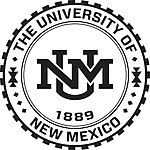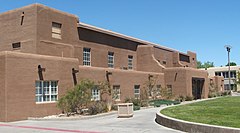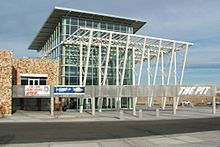
New Mexico State University is a public land-grant research university in Las Cruces, New Mexico. Founded in 1888, it is the state's oldest public institution of higher education, a flagship university in the state, and the state's first land-grant institution in New Mexico. NMSU has campuses in Alamogordo, Doña Ana County, and Grants, as well as research centers and programs in all 33 counties in the state.

University Stadium is an outdoor football stadium in the western United States, located on the south campus of the University of New Mexico in Albuquerque, New Mexico. It is the home field of New Mexico Lobos football, which competes as a member of the Mountain West Conference.

Bosque School is an independent, co-educational, college preparatory school for grades 6–12 founded in 1994. The school sits on a 42 acres (170,000 m2) site along the Rio Grande bosque in Albuquerque, New Mexico. Surrounded by the riparian forest of the bosque, the school emphasizes environmental science, the arts, and service learning. With 550 students and 60 teaching faculty, there is a 9:1 student/faculty ratio. An average class size at Bosque School is 16 students. The school is accredited by the Independent Schools Association of the Southwest and is a member of NAIS, NACAC, NMAA, APIAL and other associations. Bosque School was voted the #1 private school in Albuquerque by the 2020 Albuquerque Journal Reader's Choice Awards. The annual summer camp program at the school, Bosque Summer, was voted #1 at the same awards.

Menaul School is an independent, co-educational, college preparatory day-and-boarding school located in Albuquerque, New Mexico. Established in 1896 as a training school for "Spanish-American boys", Menaul School has evolved into a multicultural institution serving a diverse student body from grades 6 through 12. Menaul School is Albuquerque's most diverse school, with a longstanding majority-minority population and students currently hailing from more than 21 countries and six Native American nations and pueblos. Menaul School's campus is also the home of the Menaul Historical Library of the Southwest.
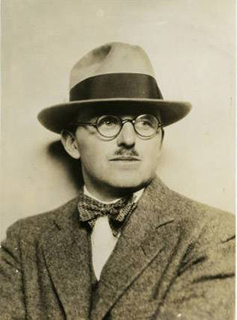
John Gaw Meem IV was an American architect based in Santa Fe, New Mexico. He is best known for his instrumental role in the development and popularization of the Pueblo Revival Style and as a proponent of architectural Regionalism in the face of international modernism. Meem is regarded as one of the most important and influential architects to have worked in New Mexico.

The Pueblo Revival style or Santa Fe style is a regional architectural style of the Southwestern United States, which draws its inspiration from Santa Fe de Nuevo México's traditional Pueblo architecture, the Spanish missions, and Territorial Style. The style developed at the beginning of the 20th century and reached its greatest popularity in the 1920s and 1930s, though it is still commonly used for new buildings. Pueblo style architecture is most prevalent in the state of New Mexico; it is often blended with Territorial Revival architecture.

The New Mexico Lobos are the athletic teams that represent the University of New Mexico, located in Albuquerque. The university participates in the NCAA Division I in the Mountain West Conference (MW) since 1999, after leaving the Western Athletic Conference. The university's athletic program fields teams in 16 varsity sports.

The University of New Mexico School of Law is the law school of the University of New Mexico, a public research university in Albuquerque, New Mexico, United States. Founded in 1947, it is the only law school in the state.
Zimmerman Field was a stadium located in Albuquerque, New Mexico. It opened in 1938 and hosted the University of New Mexico Lobos football team until they moved to University Stadium in 1960. The stadium continued in use for intramural sports until 1969, when it was demolished to make way for new academic facilities.

The Lobo is the official mascot of the University of New Mexico (UNM). Lobo Louie and Lobo Lucy are costumed wolf mascots, members of the UNM cheerleading squad, who rouse and entertain fans during Lobo athletic events.

Carlisle Gymnasium is an indoor arena on the campus of the University of New Mexico in Albuquerque, New Mexico. It was the home of the New Mexico Lobos basketball team from its opening in 1928 until the completion of the larger Johnson Gymnasium in 1957, and was also the original venue of the New Mexico Symphony Orchestra. The building currently houses the university's Elizabeth Waters Center for Dance.

Hodgin Hall, previously known at various times as the University Building, Main Building, or Administration Building, is a historic building on the University of New Mexico campus in Albuquerque, New Mexico. Completed in 1892, it was the first building constructed on the UNM campus and the university's only building for almost a decade. The building was originally designed by Jesse Wheelock in the Richardsonian Romanesque style, but structural problems with the building's roof gave university president William Tight the opportunity to have it remodeled in his preferred Pueblo Revival style in 1908.

The Art Annex is a historic building on the campus of the University of New Mexico in Albuquerque, New Mexico. Built in 1926, it originally served as the university's library. The building was designed by Trost & Trost and Elson H. Norris and features a Mayan-influenced hybrid form of Pueblo Revival architecture. It was listed in the New Mexico State Register of Cultural Properties in 1975 and the National Register of Historic Places in 1988.
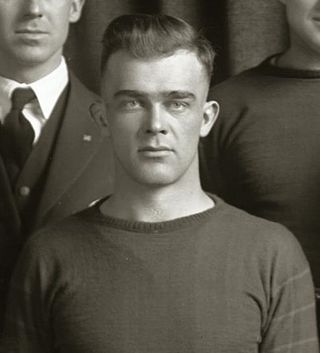
Roy William Johnson, nicknamed "Old Ironhead," was an American football player, coach of football, basketball, and baseball, and college athletics administrator. He served in various capacities in the athletics program at the University of New Mexico for nearly 40 years. He was the university's athletic director from 1920 to 1949, head football coach from 1920 to 1930, and head basketball coach from 1920 to 1931 and 1933 to 1940. He also coached New Mexico's track and tennis teams. In 1957, the university named the newly built Johnson Gymnasium in his honor.

The Pit is an indoor arena in Albuquerque, New Mexico, serving primarily as the home venue of the University of New Mexico Lobos basketball teams. The facility opened in 1966 as University Arena but gained the nickname "The Pit" due to its innovative subterranean design, with its playing floor 37 feet (11 m) below street level. The arena is located on the UNM South Campus and has a seating capacity of 15,411 for basketball and up to 13,480 for concerts, with 40 luxury suites and 365 club seats.
John "Philip" Wernette was the eighth president of the University of New Mexico serving from 1945 to 1948.
The 1946 New Mexico Lobos football team represented the University of New Mexico in the Border Conference during the 1946 college football season. In their fifth and final season under head coach Willis Barnes, the Lobos compiled a 5–5–2 record, finished third in the Border Conference, tied with Montana State in the 1947 Harbor Bowl, and were outscored by opponents by a total of 224 to 127.

Zimmerman Library is the historic main library of the University of New Mexico, located near the center of the university campus in Albuquerque, New Mexico. It is one of the largest and most notable buildings designed by New Mexico architect John Gaw Meem and is the centerpiece of the UNM Libraries, the largest library system in New Mexico with almost 4 million print volumes. It was built in 1936–38 with funding from the Public Works Administration and Works Progress Administration, with further additions completed in 1966 and 1973. The building was named for former university president James Fulton Zimmerman in 1961. It was added to the New Mexico State Register of Cultural Properties and the National Register of Historic Places in 2016.
The University of New Mexico bayoneting incident was a violent altercation between students protesting on the campus of the University of New Mexico (UNM) and the New Mexico Army National Guard that took place on May 8, 1970, in Albuquerque, New Mexico. Students protested on campus for several days leading up to the incident as a response to the Kent State shooting that had happened four days prior. The protest was also part of a larger series of anti-war demonstrations that occurred on college campuses across the United States during the late 1960s and early 1970s to voice opposition to US involvement in the Vietnam War. In the days leading up to the incident, students occupied the Student Union and Air Force ROTC buildings on campus, which led to UNM President Ferrel Heady and the Board of Regents' decision to court order the temporary closure of the Student Union Building. Heady encouraged students to leave, and many did before police arrested the remaining 131 protesters. As the building was being cleared out, the National Guard arrived and bayoneted a crowd that had gathered around the Student Union Building. During the incident, 10 or 11 people including students, teachers, and media members received bayonet wounds, though no deaths occurred.
